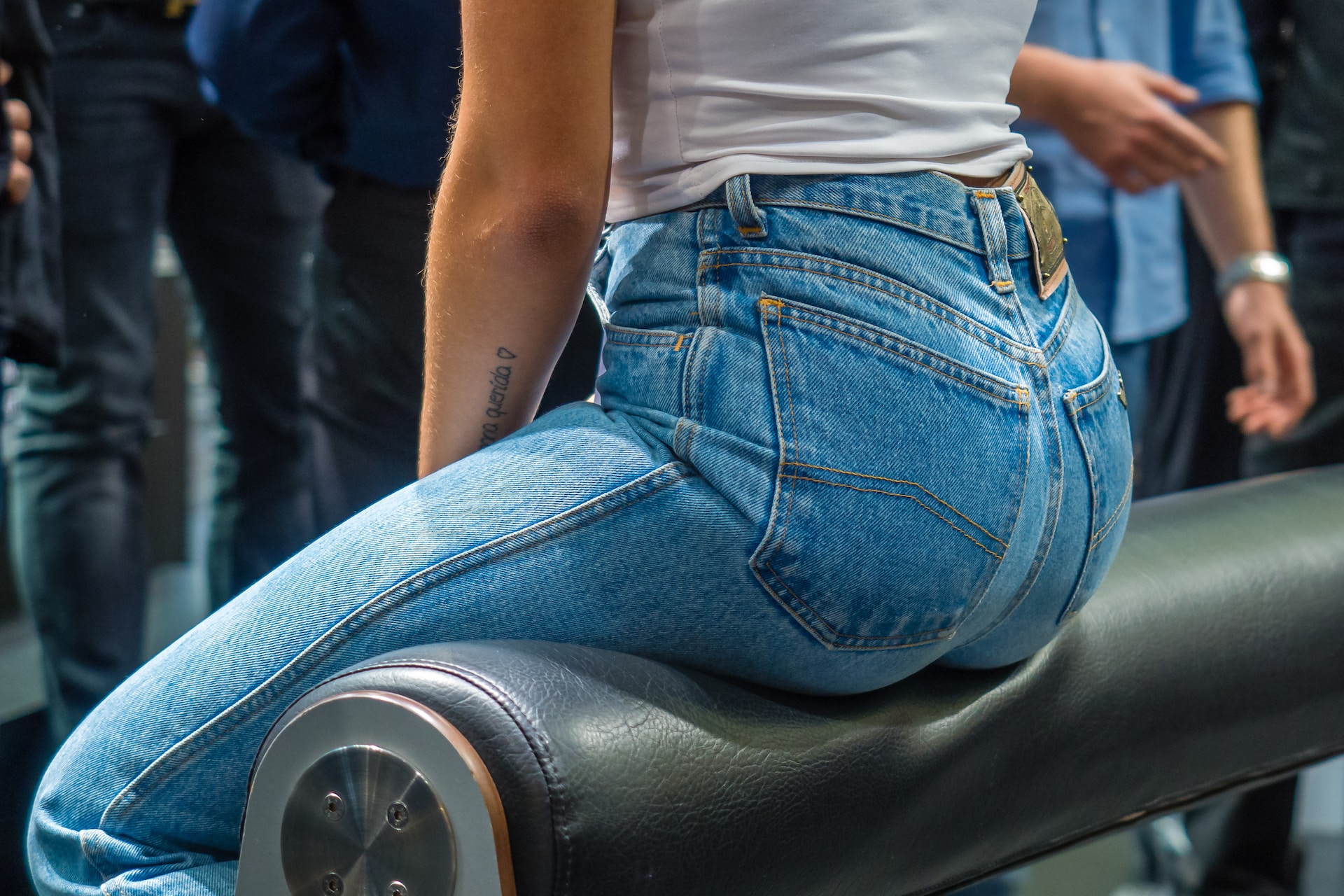Yearning to get rid of hip dips and sculpt a curvier you? Join us on a journey through the intricacies of anatomy, the influence of genetics, and natural approaches. Uncover the secrets to not just accept but actively get rid of hip dips, embracing exercises and lifestyle changes for a more confident and uniquely shaped you.
We explore the factors influencing hip dips, natural approaches to toning your hips, and even fashion and fitness tips for both men and women. If you’ve ever pondered the physiology of hip dips or considered ways to navigate and celebrate your body’s unique features, this read is tailored for you.
Key Takeaways
- Anatomy Matters: The shape of your pelvis, influenced by genetics, plays a crucial role in the appearance of hip dips.
- Genetic Influence: Hereditary factors impact bone structure, muscle insertion points, and overall body fat distribution, contributing to the presence of hip dips.
- Exercise for Toning: Strength training, cardiovascular exercises, and targeted workouts can enhance muscle tone and body composition.
- Acceptance and Embrace: Hip dips are a natural variation; embracing and appreciating your body’s uniqueness is key.
- Fashion and Style: Clothing choices, shapewear, and camouflage techniques offer non-exercise methods to minimize the appearance of hip dips.
- Confidence Matters: Regardless of body shape, confidence is attractive, impacting self-perception and how others see you.
What are Hip Dips? How do you get them?
Hip dips, also known as “violin hips” or “hip valleys,” refer to the inward curve that can occur just below the hip bone, creating a dip between the hip and thigh. Many individuals may wonder about the origin of hip dips, why they occur, and whether it is possible to eliminate or reduce them. To delve into these questions, it’s crucial to explore the anatomical, genetic, and physiological aspects associated with hip dips.
Anatomy of the Hips
- The hips are a complex region of the body, consisting of bones, muscles, and connective tissues. The major bone involved is the pelvis, which comprises the ilium, ischium, and pubis. The shape and structure of an individual’s pelvis are largely determined by genetics, influencing the overall appearance of the hips.
- Muscles around the hips, such as the gluteus medius, gluteus minimus, and tensor fasciae latae, play a crucial role in defining the contours of this area. The distribution and insertion points of these muscles contribute to the overall shape of the hip region, influencing whether a person has pronounced hip dips or not.
Genetic Factors
- Genetics is a significant factor in determining body shape and distribution of fat and muscle. Individuals inherit their bone structure and muscle insertion points from their parents, which can influence the presence of hip dips. Genetic factors also contribute to the overall body fat distribution, affecting the appearance of the hips.
-
A study published in the American Journal of Physical Anthropology in 2017 suggested that variations in pelvic shape are heritable, emphasizing the role of genetics in determining hip structure. While some people may have a more pronounced hip dip due to their genetic makeup, others may not experience this anatomical feature.
Body Fat Distribution
- The distribution of body fat also plays a crucial role in the appearance of hip dips. Body fat is not uniformly distributed, and hormonal factors, including estrogen levels, can influence where fat is stored. Women, in particular, tend to store fat in the hips and thighs due to hormonal fluctuations associated with puberty and reproductive processes.
- However, it’s essential to note that the presence of hip dips is not exclusive to women; individuals of all genders may experience variations in hip shape due to genetic and physiological factors.
How to get rid of hip dips naturally?
Hip dips, or the natural dip between the hip bone and thigh bone, are a normal part of many people’s anatomy. They are not something that needs to be “gotten rid of.” However, if your goal is to tone and strengthen your hips and glutes, you can follow a healthy lifestyle that includes exercise and a balanced diet. Here are some natural approaches:
- Strength Training:
- Focus on exercises that target the muscles around your hips and thighs. This includes squats, lunges, leg lifts, and hip thrusts.
- Building muscle in these areas can help create a more rounded appearance.
- Cardiovascular Exercise:
- Engage in regular cardiovascular exercise to help reduce overall body fat. This can contribute to a more toned and lean physique.
- Activities like running, cycling, or swimming can be effective.
- Healthy Diet:
- Maintain a balanced and nutritious diet to support overall health and well-being.
- Consume a mix of lean proteins, whole grains, fruits, and vegetables.
- Stay hydrated and limit the intake of processed foods, sugars, and excessive fats.
- Hydration:
- Drink plenty of water to support your body’s overall health and maintain skin elasticity.
- Posture:
- Work on your posture, as standing tall and confident can affect the way your body is perceived.
- Acceptance:
- Understand that everyone’s body is unique, and hip dips are a natural variation.
- Embrace and appreciate your body for its individuality.
Exercises that can help you get rid of hip dips fast?
It’s important to note that “hip dips” refer to a natural indentation between the hip bone and the thigh bone, and they are a normal variation in body shape. However, if you’re looking to tone and strengthen your hips, thighs, and glutes, here are some exercises you can incorporate into your routine. While there’s no guaranteed way to “get rid of hip dips fast,” consistent exercise and a healthy lifestyle can help improve overall muscle tone and body composition.
- Side Leg Raises:
- Lie on your side and lift one leg upward, keeping it straight.
- Lower it back down without letting it touch the other leg.
- Repeat on both sides.
- Clamshells:
- Lie on your side with your hips and knees bent at a 90-degree angle.
- Keep your feet together and lift your top knee upward, then lower it back down.
- Repeat on both sides.
- Donkey Kicks:
- Start on your hands and knees in a tabletop position.
- Lift one leg straight back and up, keeping the knee bent at a 90-degree angle.
- Lower it back down without touching the ground.
- Repeat on both sides.
- Squats:
- Stand with your feet shoulder-width apart.
- Bend your knees and lower your hips as if sitting back in a chair.
- Keep your back straight and chest up.
- Rise back up to the starting position.
- Lunges:
- Step forward with one foot and lower your body until both knees are bent at a 90-degree angle.
- Push back up to the starting position.
- Repeat on both legs.
- Hip Thrusts:
- Sit on the floor with your back against a sturdy bench.
- Place a weight or a barbell across your hips.
- Lift your hips toward the ceiling, squeezing your glutes at the top.
- Lower your hips back down and repeat.
Also Read: Ultimate Guide to Building Strong Legs: Top 10 Leg Workouts for a Sculpted Lower Body
How to get rid of hip dips without exercise?
If you’re looking to minimize the appearance of hip dips without relying on exercise, there are a few strategies you can consider. Keep in mind that these approaches won’t eliminate hip dips, as they are a natural part of many body shapes, but they may help you feel more confident and comfortable:
- Clothing Choices:
- Wear clothing that accentuates your waist, as this can create the illusion of fuller hips.
- High-waisted bottoms or skirts that cinch at the waist can help enhance the curves around your hip area.
- Shapewear:
- Consider using shapewear or undergarments that provide smoothing and shaping effects.
- Some shapewear is designed to enhance curves and create a more contoured silhouette.
- Camouflage Techniques:
- Experiment with fashion techniques that draw attention away from the hip area.
- Layering clothing, choosing patterns strategically, or wearing statement accessories can divert focus.
- Body Contouring Makeup:
- Some individuals use makeup techniques to contour and highlight different parts of their body, creating the appearance of curves.
- This approach requires some skill in makeup application and may not be suitable for everyone.
Navigating Hip Dips with Style
Tips for Women Dressing with Hip Dips
While it’s important to embrace and love your body as it is, if you’re looking for ways to minimize the appearance of hip dips, there are some fashion and fitness tips you can consider:
- High-Waisted Clothing: Opt for high-waisted skirts, pants, and shorts. This helps to create the illusion of a smoother hip line and can minimize the visibility of hip dips.
- A-Line Skirts and Dresses: Choose A-line skirts and dresses that flare out from the waist. This style can help create a more balanced silhouette by drawing attention away from the hip dips.
- Layered Clothing: Experiment with layered clothing. Wearing layers can add texture and distract from the shape of your hips.
- Belting: Cinch your waist with a belt. This draws attention to your waistline and can create a more defined hourglass shape.
- Structured Jackets and Blazers: Wear structured jackets or blazers that emphasize your shoulders. This can help balance out the hips and draw attention upwards.
Tips for Men Dressing with Hip Dips
Just like for females, males need to embrace and love their bodies as they are. However, if you’re looking for tips to enhance your appearance or feel more confident, here are some suggestions:
- Clothing Choices: Wear well-fitted clothes: Clothes that fit properly can enhance your natural body shape. Avoid overly baggy or tight clothing. Darker colors, especially on the bottom, can create a slimming effect.
- Layering: Layering can add depth and texture to your outfit, drawing attention away from specific areas. Consider adding a well-fitted jacket or a stylish vest.
- V-Neck Shirts: V-neck shirts can create the illusion of a longer neck and draw attention upwards. This can help balance out your overall appearance.
- Structured Shoulders: Choose clothing with structured shoulders, like blazers or jackets with padding. This can give the appearance of broader shoulders, creating a more balanced silhouette.
- Grooming: Maintain good grooming habits. A well-groomed appearance, including a clean haircut and trimmed facial hair, can significantly impact how you feel about yourself.
- Confidence: Confidence is attractive. Stand tall, make eye contact, and carry yourself with confidence. This can make a significant difference in how others perceive you.
Final Thoughts
In conclusion, the journey to get rid of hip dips is about more than just physical transformation; it’s a celebration of individuality. This article has provided insights into the anatomical, genetic, and physiological aspects influencing hip dips, offering both natural and non-exercise approaches to enhance your body’s contours. Whether you’re seeking ways to tone your hips or embrace your individuality, the key lies in acknowledging that everybody is unique and beautiful in its way. Celebrate yourself, and let this guide empower you on your path to self-love and confidence.
FAQs on Hip Dips
- Q: What are hip dips?
- A: Hip dips refer to the inward curve just below the hip bone, creating a dip between the hip and thigh.
- Q: Are hip dips only present in women?
- A: No, individuals of all genders may experience variations in hip shape due to genetic and physiological factors.
- Q: Can you eliminate hip dips?
- A: Hip dips are a natural part of many body shapes. While exercise can enhance muscle tone, it cannot be eliminated.
- Q: How do genetics influence hip dips?
- A: Genetic factors impact bone structure, muscle insertion points, and overall body fat distribution, contributing to the presence of hip dips.
- Q: Can fashion choices minimize the appearance of hip dips?
- A: Yes, wearing high-waisted clothing, A-line skirts, layering, and belting can create the illusion of a smoother hip line.
- Q: Are hip dips a result of hormonal changes?
- A: Hormonal factors, especially estrogen levels, influence body fat distribution, and women tend to store fat in the hips and thighs.
- Q: Is it possible to enhance confidence regardless of body shape?
- A: Yes, confidence is attractive. Embrace and appreciate your body’s uniqueness, and stand tall with confidence.
#HipDipsExplained #BodyPositivity #GeneticsAndBodyShape #EmbraceYourCurves #FitnessJourney #SelfLove #AnatomyOfTheHips #ConfidenceIsKey #FashionTips #HealthyLifestyle #BodyAcceptance #NaturalBeauty #StrengthTraining #UniqueBody #LoveYourself
Note: The information provided in this article is for educational purposes only and should not be taken as medical advice. For personalized health recommendations, it is always advisable to consult with a healthcare professional before incorporating any changes to your daily health routine.








No comment yet, add your voice below!